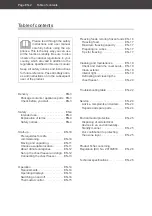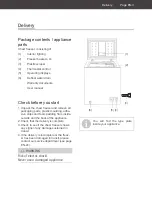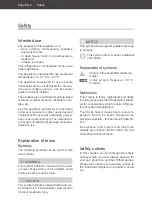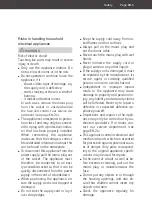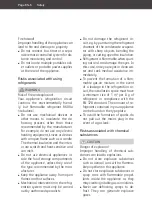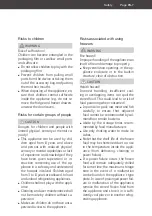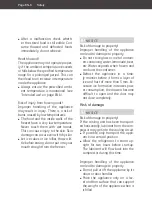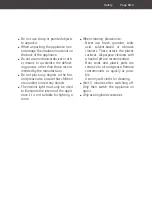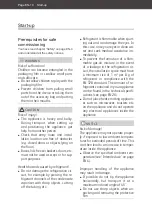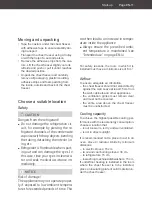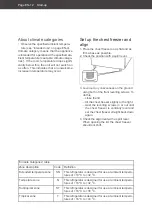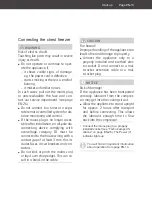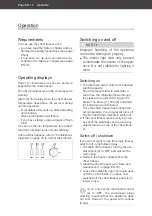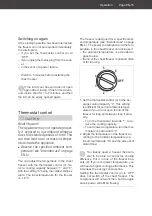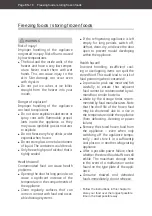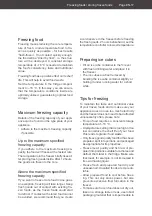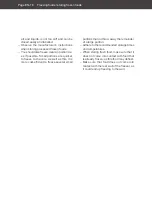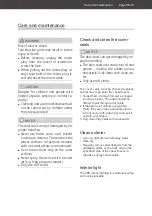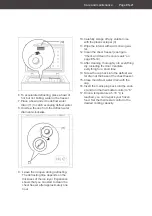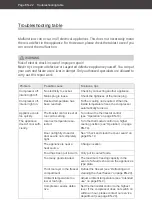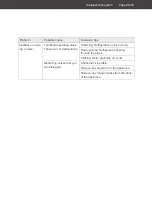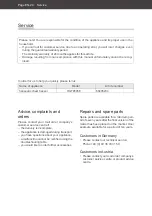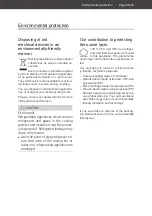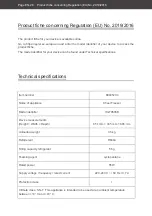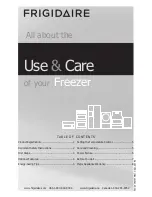
Freezing foods / storing frozen foods
Page EN-16
Freezing foods / storing frozen foods
WARNING
Risk of injury!
Improper handling of the appliance
may result in injury. Risk of burns caused
by low temperatures.
■
The food and the inside walls of the
freezer unit have a very low temper-
ature. Never touch them with wet
hands. This can cause injury to the
skin. Skin damage can occur even
with dry skin.
■
Do not put ice cubes or ice lollies
straight from the freezer into your
mouth.
Danger of explosion!
Improper handling of the appliance
can lead to explosions.
■
Do not store explosive substances or
spray cans with fl ammable propel-
lants inside the appliance, as they
may cause ignitable gas-air mixtures
to explode.
■
Do not freeze any fi zzy drinks; water
expands when frozen.
■
Do not store glass or metal containers
of liquid. The containers could break.
■
Only freeze high-proof alcohol that is
tightly sealed.
Health hazard!
Contaminated food can cause health
problems.
■
Opening the door for long periods can
cause a signifi cant increase of the
temperature in the compartments of
the appliance.
■
Clean regularly surfaces that can
come in contact with food and acces-
sible drainage systems.
■
If the refrigerating appliance is left
empty for long periods, switch off,
defrost, clean, dry, and leave the door
open to prevent mould developing
within the appliance.
Health hazard!
Incorrect handling, insuffi cient cool-
ing or overlapping items can spoil the
stored food. This could lead to a risk of
food poisoning when consumed!
■
In particular, pack raw meat and fi sh
carefully to ensure that adjacent
food cannot be contaminated by sal-
monella or similar bacteria.
■
Abide by the storage times recom-
mended by food manufacturers. Note
that the shelf life of the frozen food
may be shortened due to a rise in
the temperature inside the appliance
(from defrosting, cleaning or power
failure).
■
Remove the stored frozen food from
the appliance – even when only
switching off the appliance tempo-
rarily – and store it in a suffi ciently
cool place or in another refrigerating
appliance.
■
After a possible power failure, check
whether the stored foodstuffs are still
edible. The maximum storage time
in the event of a malfunction can be
found on the type plate of the appli-
ance.
■
Consume thawed and defrosted
foods immediately; do not refreeze.
• Follow the instructions in this chapter to
store your food over the longest possible
time in the best possible way.

